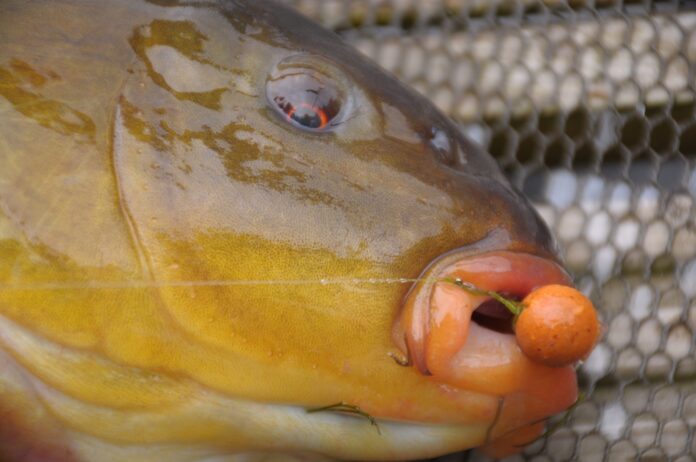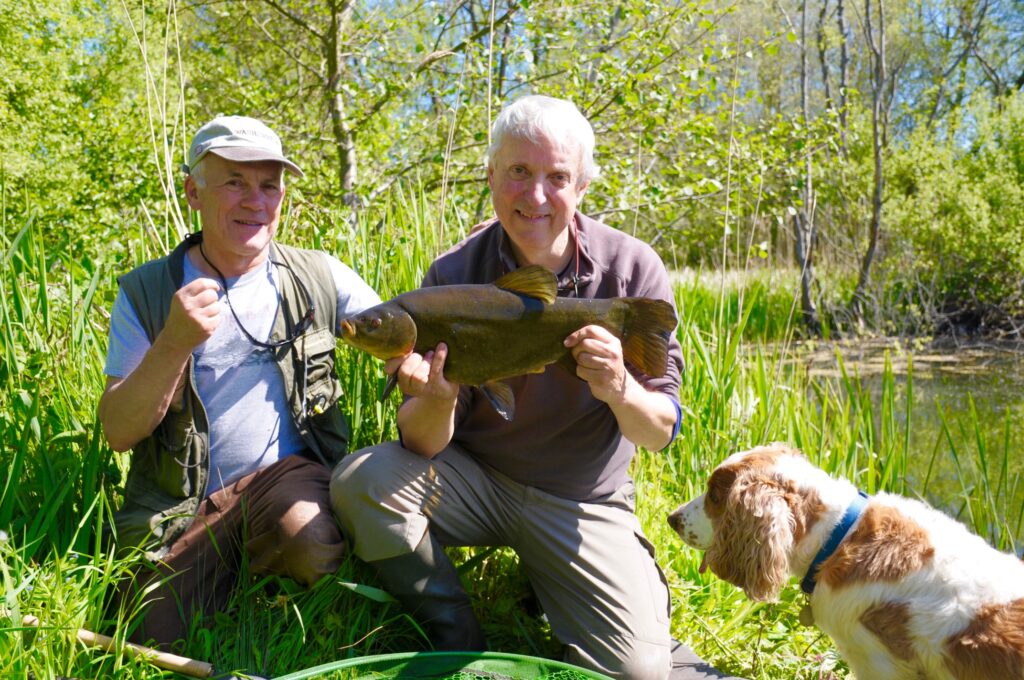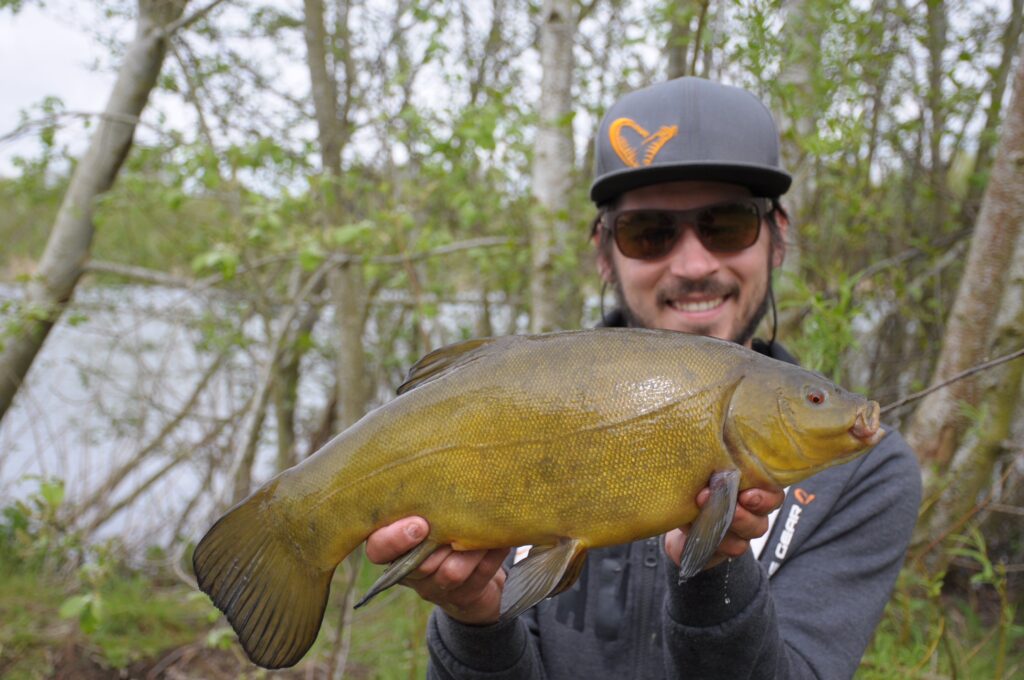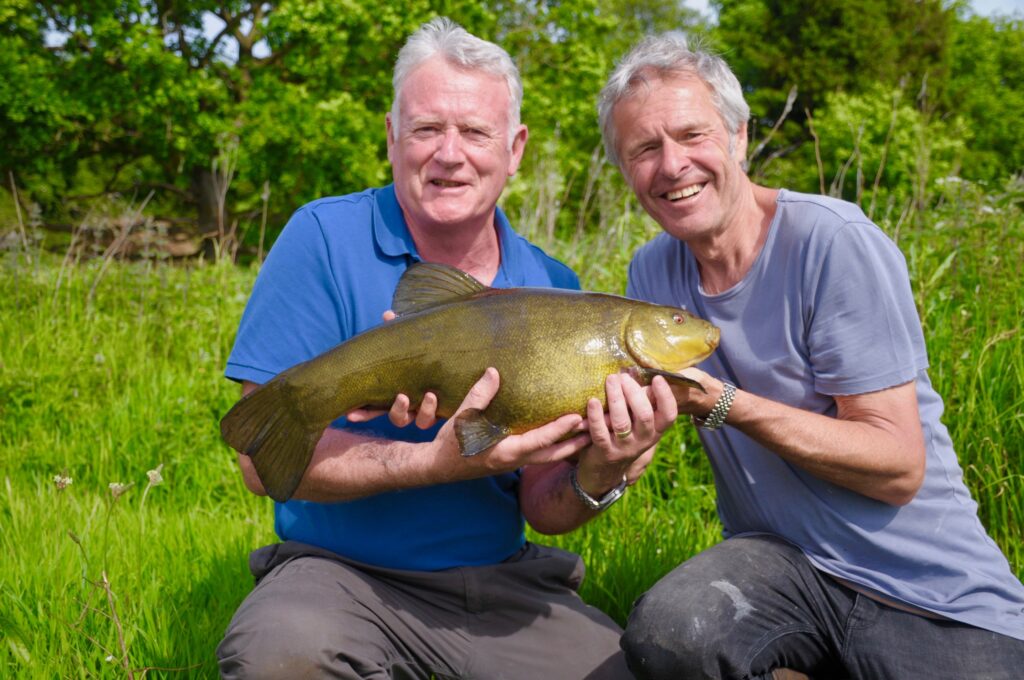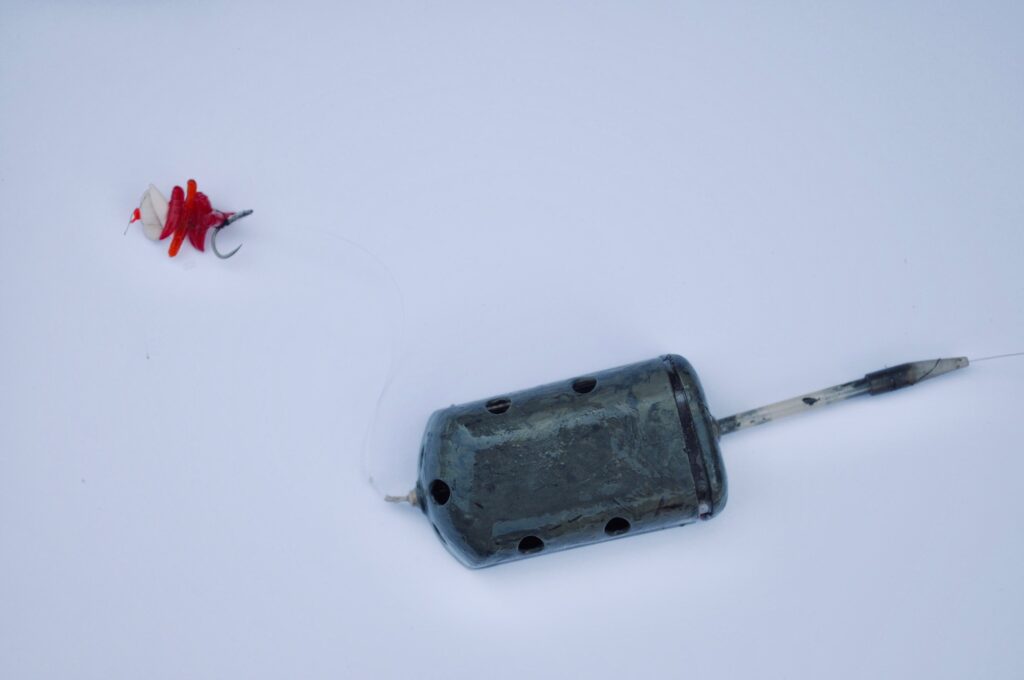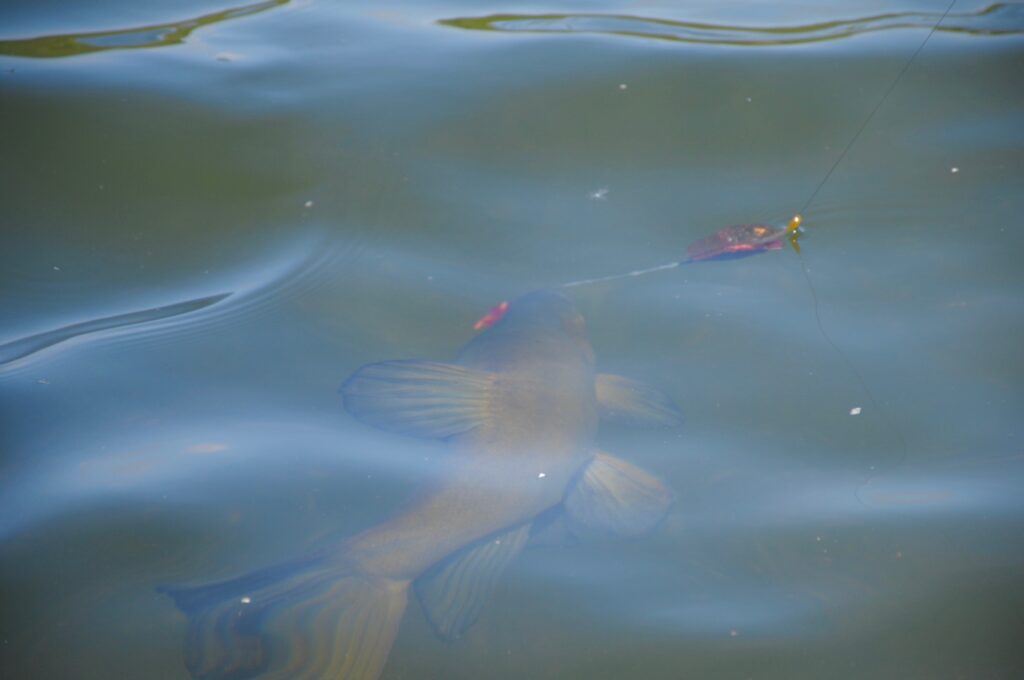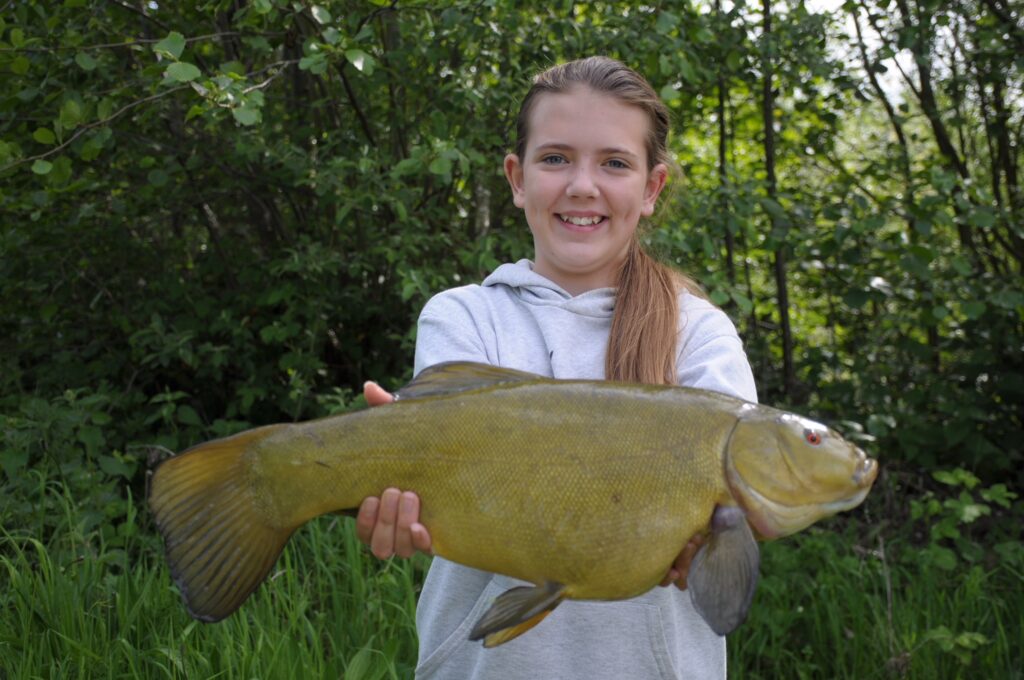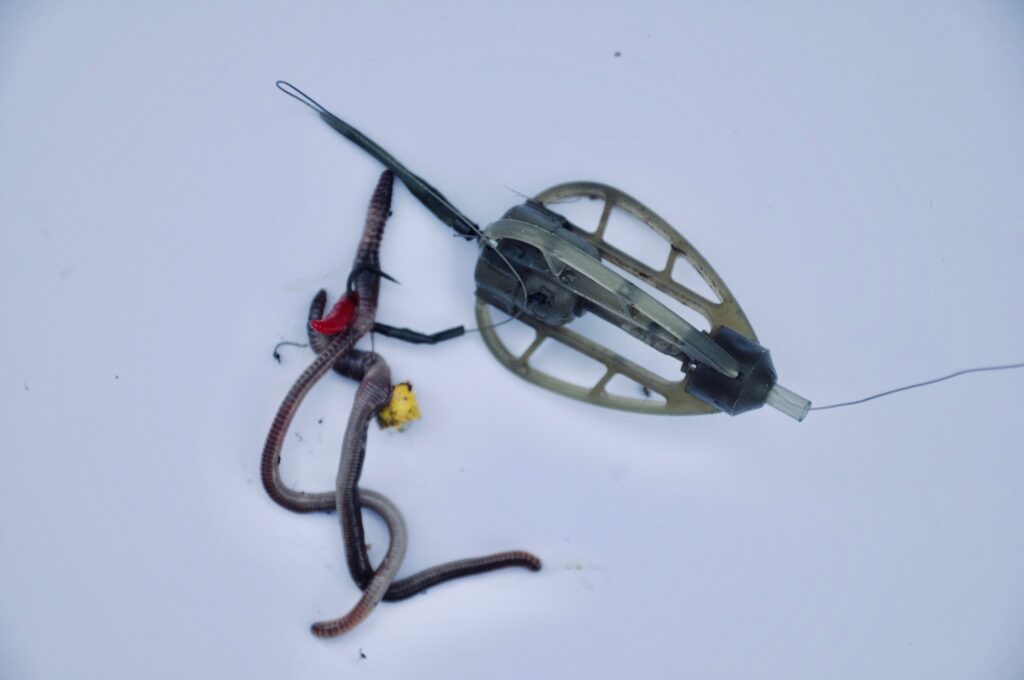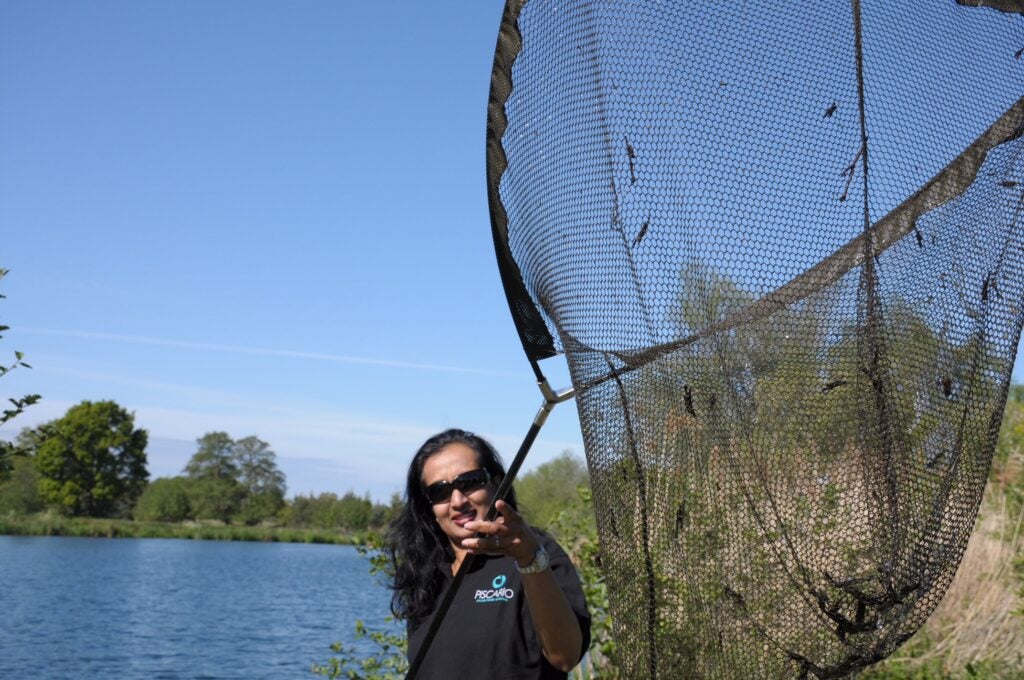#6 BAITS
Over the past ten years, April, May and June have been my hectic tench guiding months, and some seasons I have been out between five and six times a week. My best year saw in excess of twelve hundred tench landed, and even my worst ones have resulted in five hundred plus fish. A decent day for me is ten tench, split between anything from one to four anglers. A good day is twenty fish, and a red letter day, fifty fish plus. One day in 2018, Malcolm and Richard had sixty seven tench and eight double figure bream. The three of us thought what you are thinking: it really was too much, but these are guys in their sixties who have known tough times, and deserved one extraordinary day as recompense.
Now, I do NOT cite these figures to brag in any way, believe me. I only tell you all this because it is important you take on board what baits have produced these results. I want to give you confidence to perhaps try something new. Overall and approximately, in the last three years, 45% of all tench have been caught on plastic baits; 35% have been caught on boilies; and 20% have come on naturals of one sort or another. Let’s look more closely at these figures.
PLASTIC BAITS
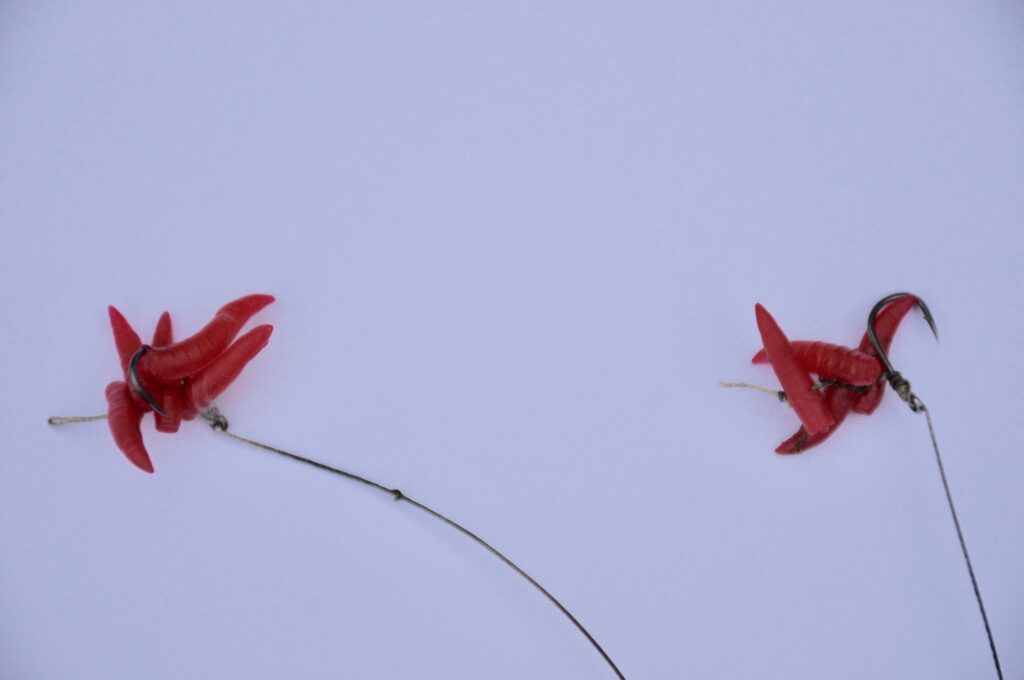

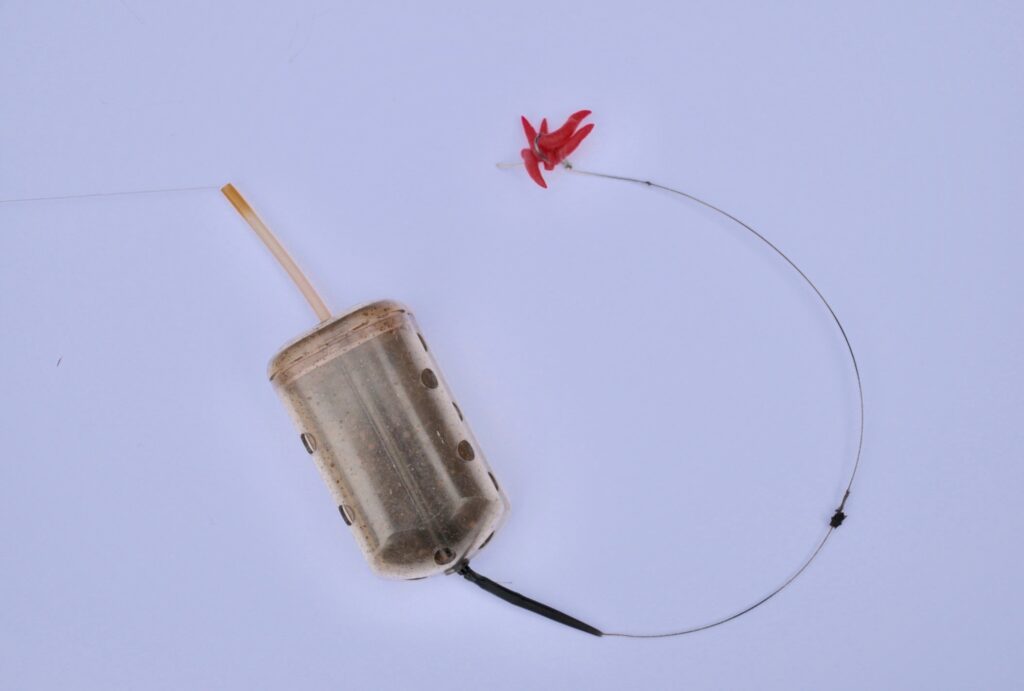

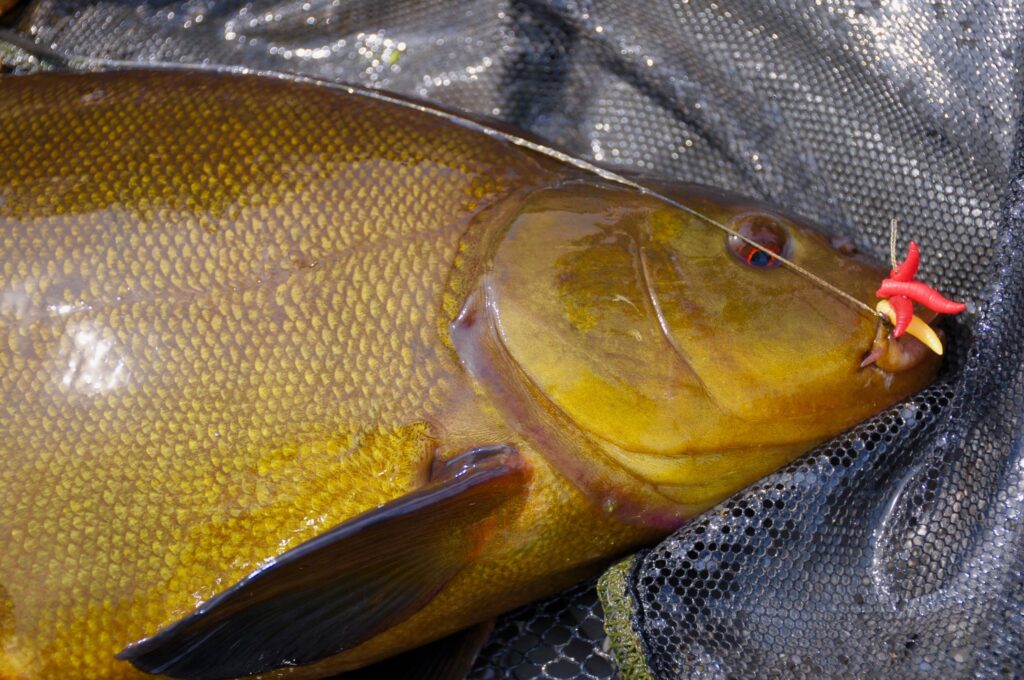

I had great trouble believing in plastic baits myself, and a lot of my guests can’t initially get their head around them either. At first, it seems bonkers that a tench would prefer to eat bits of plastic than the real thing – but they do. Let’s take red maggots. Firstly, I used three real maggots on a 14, and one plastic one. Then I used two and two. After a while, it went to three plastics and one real one, and soon I went the whole hog of four plastics and no real ones at all. AND the catch rate went up and up, whether using feeder or float.
To get used to this concept, you have to go back to how I described the way tench feed in Tench Timetable Part 5. Remember the all-important tench suck I talked about. Four maggots on a size 14 are heavy, and do not rise into the tench’s mouth because of this. The suck does not have enough power, and the maggots are left on the lake bed. However, three, four or five plastic maggots, especially the buoyant ones, counterbalance the weight of the hook perfectly, and when the tench hovers over this bait and sucks, the hook flies into the mouth. Bingo.
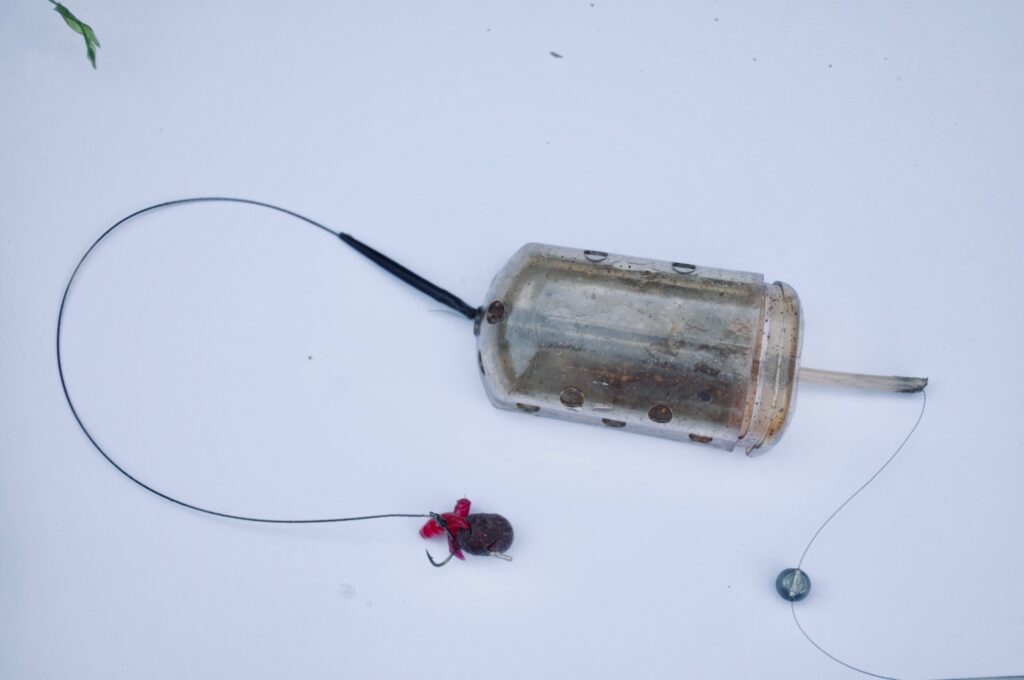

Not all plastic baits are equal. I vastly prefer all those made by Drennan. Take that company’s red maggots, a real favourite. They are big, glossy, blood-red, and magnificently buoyant. They stand out on the lake bed and tench actively home in on them. You can use these plastic maggots direct on the hook, but in my view, they are better hair-rigged. Remember what I said about testing baits in a bucket or shallow margins? Waft your hand over every bait set-up, and it should lift and waver in the current you produce. Think about three big tench in the immediate vicinity of your bait. Imagine the power of their pectorals and the way they stir the water around them. You want your bait to be lifting and falling balletically, and all a tench has to do is open its lips and sip it in.
So, experiment with plastic maggots, and vary the numbers and hook sizes ’till you are happy with the way everything behaves in the water. Use plastic corn similarly, and plastic bloodworm can be deadly over silt beds. And, as a bonus, small silvers ignore plastics, so you can rest assured your bait is sitting there perfect until it is taken.
BOILIES
Again, both on float and feeder, boilies are a killer tench bait. I much prefer them to pellets, though the latter do take bream if they are present. I personally prefer red boilies sized 10mm or 12mm, but 15mm can be a go-to if big silvers are a nuisance. I’m not too fussed on the flavour or make, to be honest, as most of those I have tried seem to work. There are times when neon colours win the day, so keep a few pinks and lurid oranges in your bag.
Now, tench know that a boilie needs a bigger, more hearty suck than a maggot, so often a hair-rigged boilie will do the job. If bites are not materialising, then, once more, you need to tinker a bit. Try half a boilie. Try a smaller hook. A longer hair. Try a cocktail and put three plastic maggots, or a piece of plastic corn, on the hair to make the boilie more buoyant. Try an out-and-out pop-up boilie. Try putting a buoyant neon-coloured plastic blob on the hair, alongside the boilie, to help neutralise the weight and give visual appeal. Once again, test and retest your boilie set-up in that bucket ’till you get everything spot-on.
NATURALS
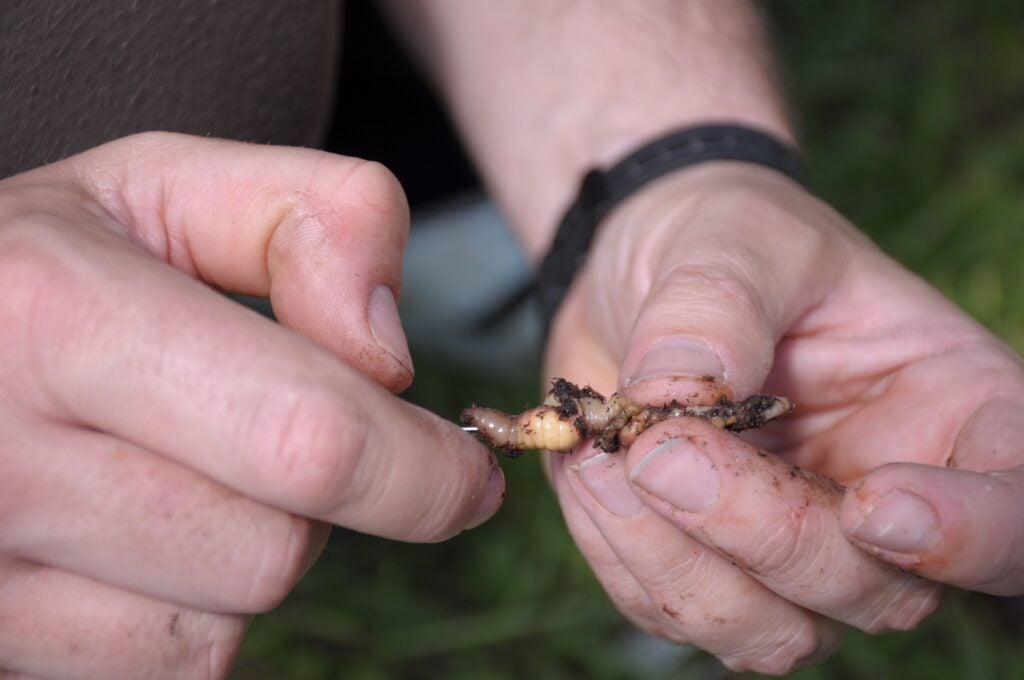

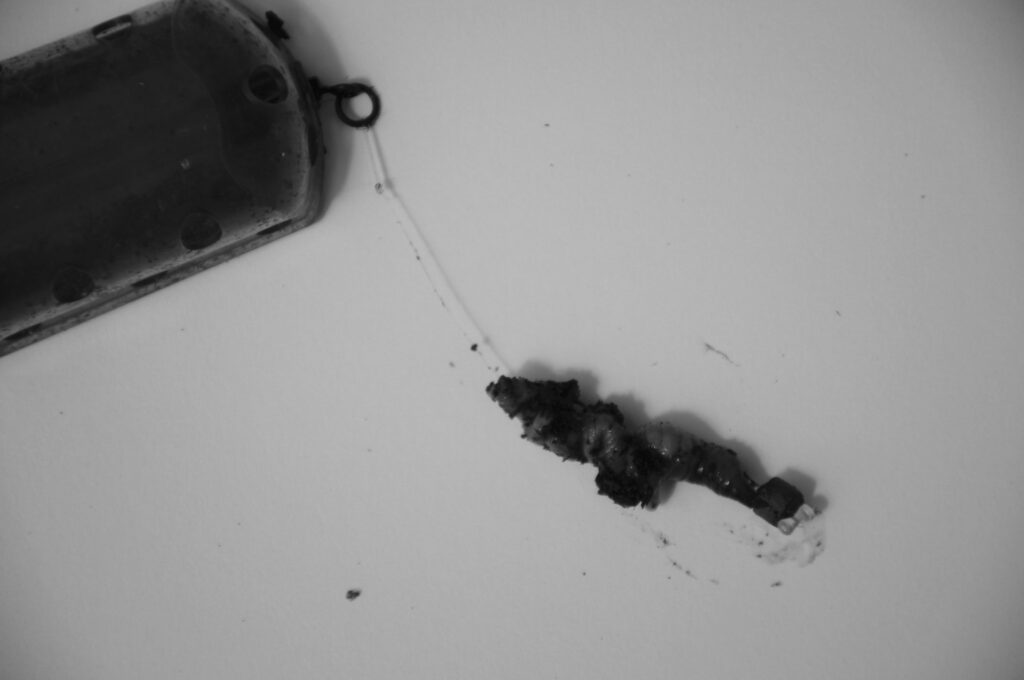



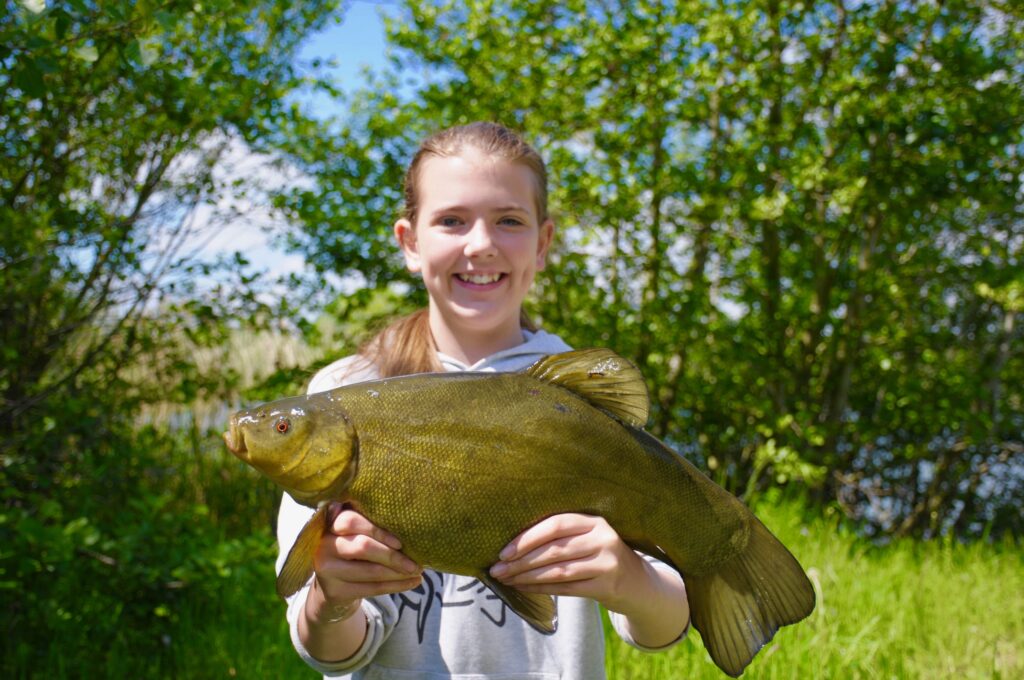

Of all the “old” baits, worms are the one I still use. When lakes are dead, especially post-3.00pm, a good old lob can produce a fish or two out of seemingly nowhere. I never quite believe it when I see it, but, hey, it can work.
Now this happened. In 2017, David had been fishing with me from Monday morning ’till Wednesday afternoon. We had had two tench I think. It had been dire. He had left a bottle of something in a sack in the margins, and before he left he said we would have a quick toast, failure notwithstanding. The sack came in and there were some caddis cases on it. I put four on a hook whilst we drank… and David had a tench in a couple of minutes. There were five caddis left. On they went and out came a second tench. On Thursday Ian was with me. I had left a landing net in the margins overnight, and two hundred caddis had climbed onto it. Those caddis, and those we caught during the day, landed us over fifty fish. Friday the same. By Saturday, we had recorded around 130 runs to caddis and 5 to maggots. We had fished maggot on two rods and caddis on two rods, and the rod positions were rotated so the experiment was as fair as we could make it.
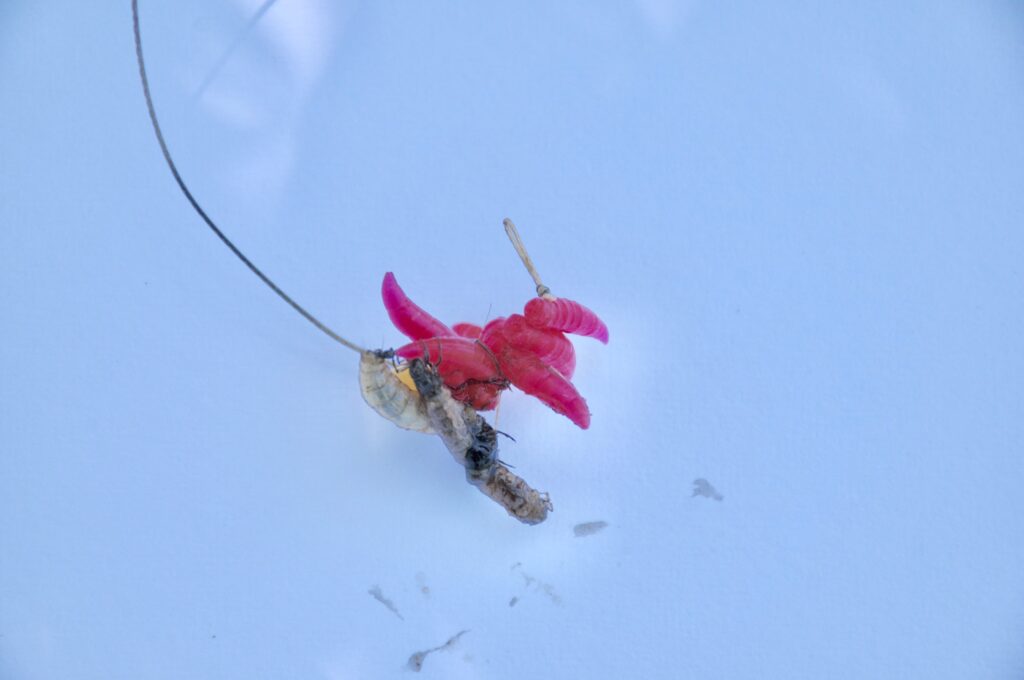

We have never had quite as dramatic experience as this again, but caddis can turn around a quiet day, and they are a huge addition to a normal plastic maggot set-up. Four plastics on a hair and three caddis on the hook produce a great cocktail, but play around yourself.
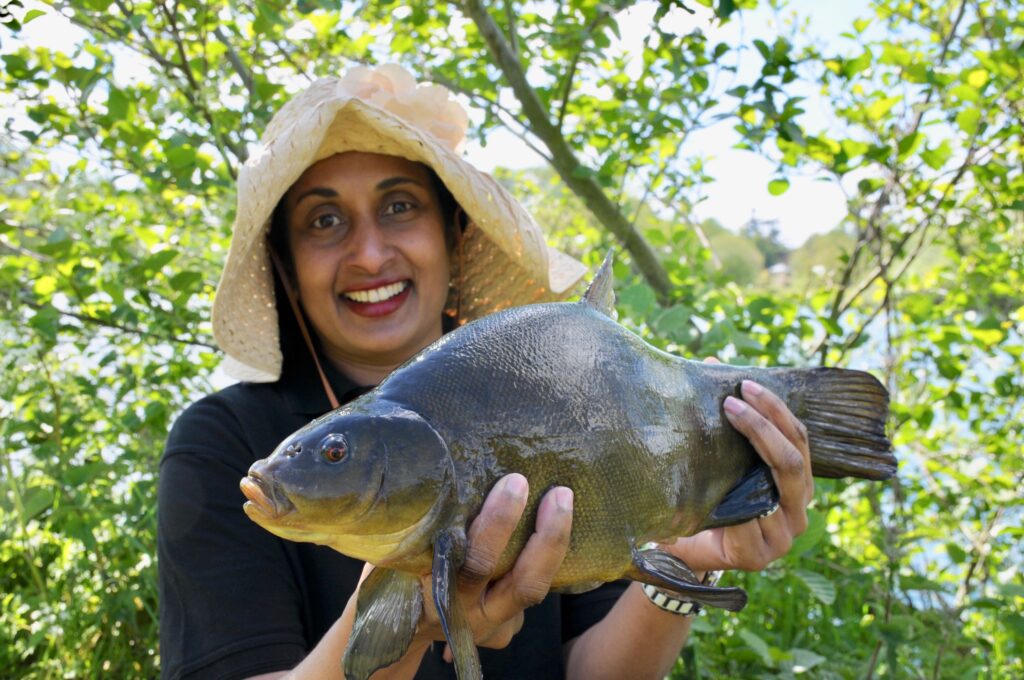

Some lakes are caddis-richer than others, but most hold them in my experience. Place a soft mesh landing net in the margins and if you search around, you should find the caddis in their cases clinging to the mesh when you pull it in. Robbie Northman enjoys catching caddis rather more than he does catching tench, by the way! We tend to extract the grub from the case carefully but on occasion, when action has been red-hot we have simply hooked the case and have had fish. That is how tench eat them in the wild after all, not prepared by JB with loving care.
So there you are. Crabtree would be turning in his grave, I know, but I’m telling you what has worked extremely well for us on very many tench lakes. I’m never saying a knob of flake or paste will not work from time to time, but if you want to catch tench regularly, this is how I do it. Next, I’ll be taking you through a JB tench day on the float.










